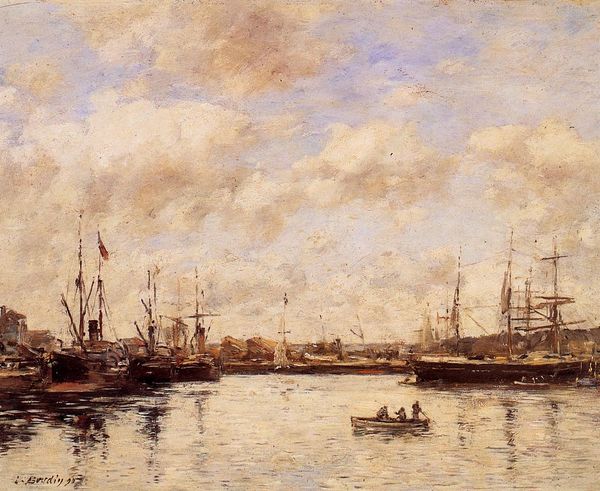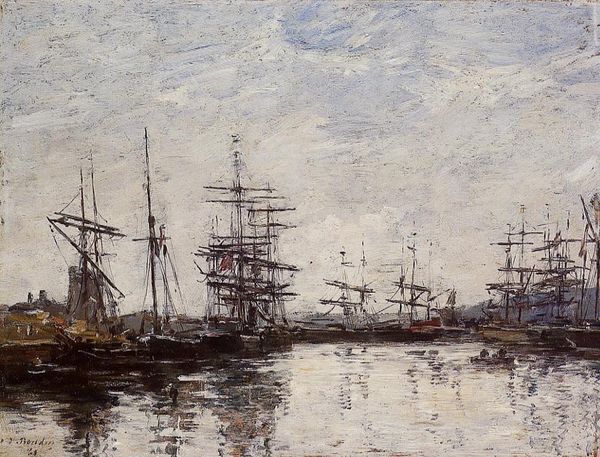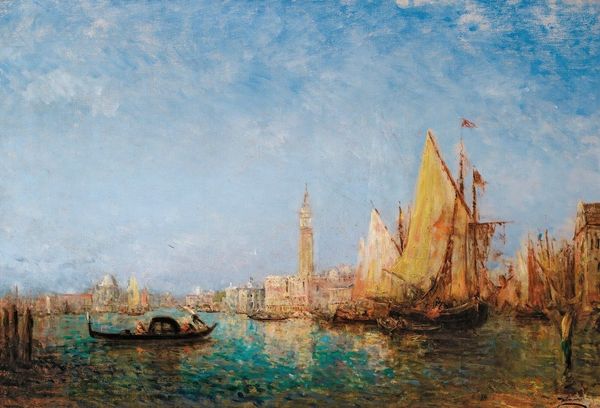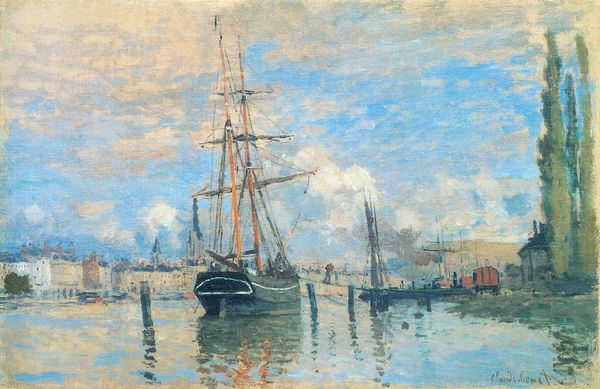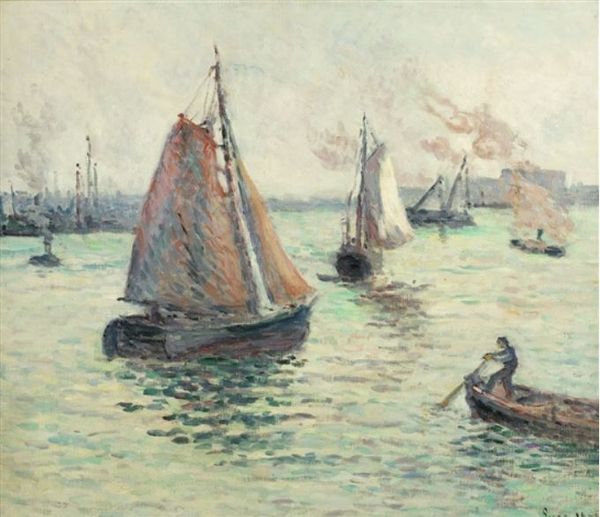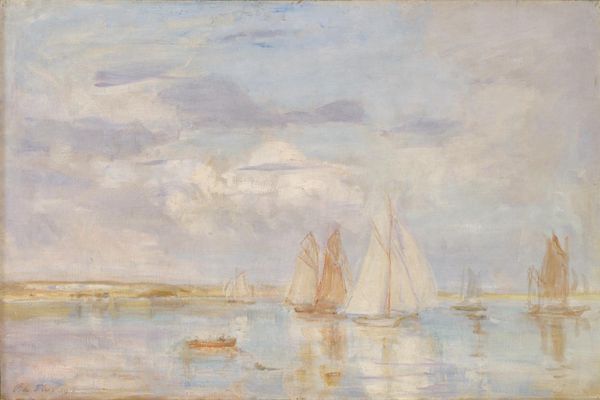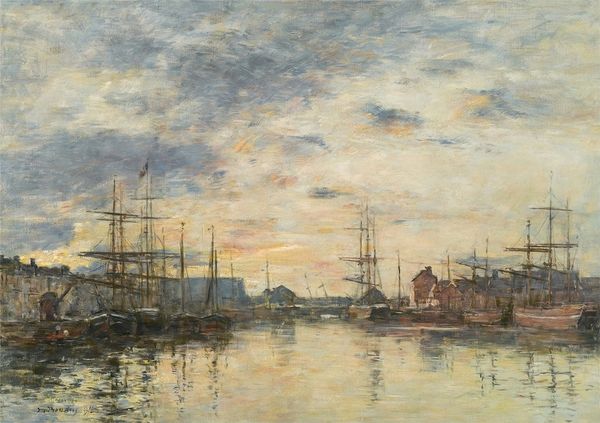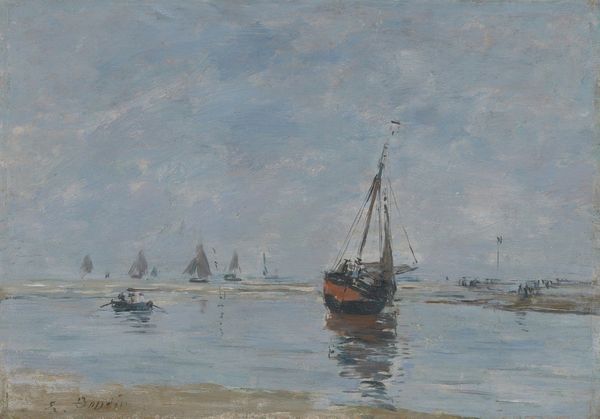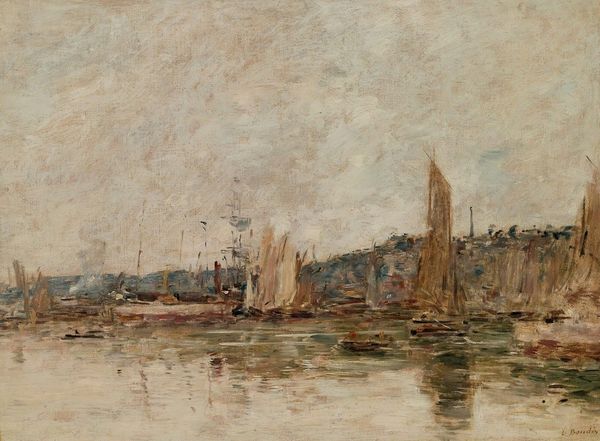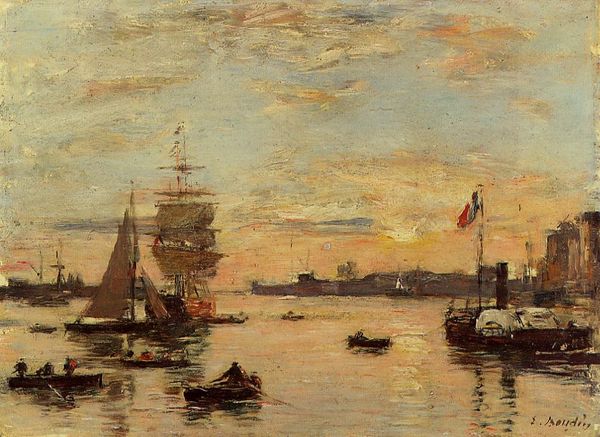
Copyright: Public Domain: Artvee
Curator: Immediately, I am struck by how tranquil it seems. A very serene and calming atmosphere. Editor: Indeed. What we have here is James Ensor’s "Ostend Harbour," dating back to 1900. Ensor was known for pushing boundaries. Notice the unusual blending of watercolour and enamel in this cityscape scene. Curator: Yes, you can really see the layered textures created by those materials. What was the broader context in which this harbour was painted? Were there other paintings of the same subject matter circulating at the time? Editor: Absolutely. The late 19th century was a boom time for port cities. Urban development alongside Impressionist trends meant a flourishing of harbour scenes as artists explored modern life and industrial activity, often promoted in national exhibitions and international expositions. Ensor positions the scene somewhere in between—he gives us neither heavy industrialisation nor purely untouched nature. It seems very suspended in time. Curator: Enamel too… what an unexpected medium for such a painterly style. Enamel paints, given their durable and glossy surface, seem very attuned to representing modern products that had a high degree of finish, polish and industrial production about them. How do you imagine Ensor encountered and chose those paints for his painting? Editor: An interesting question! It suggests that Ensor wasn’t merely depicting the harbour but also engaging with the evolving material culture around him. The work enters conversations related to the socio-economic circumstances that support the painting and its creation. Curator: Yes. Its pastel-like color scheme, almost like a faded memory. What message was Ensor looking to express here? Editor: I think Ensor was less interested in a specific message, and more captivated by capturing the ephemeral essence of place, time, and the effects of light. This perspective is deeply embedded in impressionist landscape traditions. Curator: So, viewing this artwork, we witness not just the surface of a port, but a confluence of material innovation and Impressionistic interpretation. Editor: Precisely. We see the harbor, the technique, the moment in time.
Comments
No comments
Be the first to comment and join the conversation on the ultimate creative platform.

